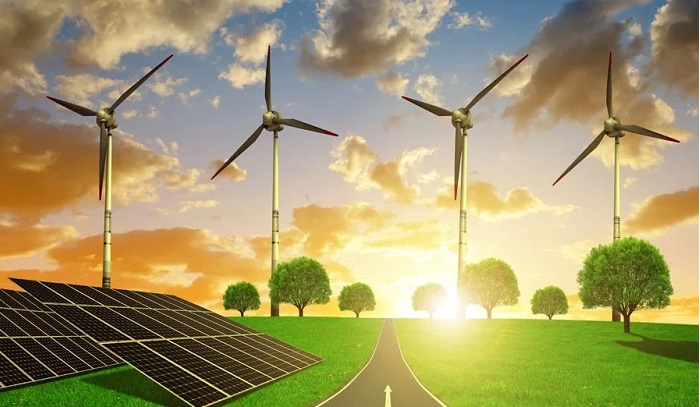In terms of energy, Southeast Asia is at a turning point. With energy demand rising by 4% every year and the task of becoming less reliant on fossil fuels, switching to clean energy is essential for the region to meet its global climate goals.
The Association of Southeast Asian Nations (ASEAN) is responsible for about 5% of the world’s emissions right now. The International Energy Agency predicts that by 2040, ASEAN’s CO2 emissions will reach 2.4 gigatonnes, which is 71% more than they were in 2018. Moving to renewable energy sources needs strong and quick action right away, and working together with other countries is an important part of the process.
ASEAN needs to spend about US$27 billion a year in new capacity to reach its goal of getting 23% of its energy from green sources by 2025. With an average age of only 14 years, the region’s coal fleet is the youngest in the world. It will cost at least US$277 billion to shut down these plants early. Big coal economies, like Indonesia, will have a hard time with money. They need about US$97 billion to meet their emission reduction goals for the on-grid power industry by 2030. It is also very hard to find the skilled workers and strong institutions that are needed to make and implement good energy policies.
The region is sending a clear message: it needs a lot of financial and technical help to make the switch to clean energy.
When countries work together, they can use the power of group action, get financial help, and feel more confident in their ability to handle problems because they know they are not alone.
In their Nationally Determined Contributions, the Philippines, Indonesia, Thailand, and Vietnam have already said that they need foreign help to reach their higher carbon reduction goals.
There are already some steps being taken toward international cooperation. These include the Southeast Asia Energy Transition Partnership, the Asia Zero Emissions Community, and the Asian Development Bank’s Energy Transition Mechanism. The Just Energy Transition Partnerships, which are run by the G7, have said that they will give Indonesia $20 billion and Vietnam $15.5 billion in starting funds. But more needs to be done to speed up the energy shift.
There are many chances to work together in this area. Countries could share more energy with each other across borders. This would be good for the economy and the environment, especially if the electricity came from solar and wind power. One great example is how the Asian Development Bank gave US$692 million to fund a 600 megawatt wind power project in Laos so that energy could be sent to Vietnam. The Laos–Thailand–Malaysia–Singapore Power Integration Project would also make it easier for countries to deal with each other.
Adopting good policy models from neighbors can help more people use green energy. In this case, Vietnam’s rise in solar and wind energy—which made up 13% of its power mix in 2022, up from almost nothing in 2017—is a good example.
As the EU’s Carbon Border Adjustment Mechanism (CBAM) starts to work, it will be very important to make sure that this policy is in line with larger energy change plans. This is to protect the world climate and lessen any negative effects that might happen. ASEAN could deal with the EU more effectively if they worked together to get better CBAM terms and support for the region’s efforts to cut carbon emissions.
It might not be possible to reduce the effects of CBAM by putting in place a shared carbon tax or pollution trading plan across Southeast Asia. However, member countries could learn from how Singapore and Indonesia handle carbon pricing in order to create their own systems in their own countries.
Indonesia, Vietnam, the Philippines, Singapore, and Brunei all want to get rid of coal power by the 2040s as part of their strong resolve to net-zero pollution.
To reach net-zero pollution, we need help from other countries. This help must include more than just money; it must also improve the local government’s ability to make decisions, share scientific information, and educate the people. These efforts can be made stronger by working together with other countries on a regional and global level, such as in ASEAN, and by building on programs like the Southeast Asia Energy Transition Partnership and the Asia Zero Emissions Community.
Australia, China, Japan, and other nearby countries, as well as global players like the EU and the US, all played important parts in the energy shift. This shows how trade, finance, and diplomacy are all linked.
These countries can help by sending low-carbon goods to other countries, like green hydrogen, renewable energy technologies, solar panels, batteries, and electric vehicles. They can do this by taking advantage of Southeast Asia’s growing markets for electric cars and renewable energy technologies.
Getting involved with Southeast Asia has perks other than trade. Countries outside the region can improve their global positions by building stronger ties with this economically and strategically important area.
In April 2024, Australian Senator Jenny McAllister spoke at the Australia–Vietnam Green Economy Summit in Ho Chi Minh City. She said that Australia benefits when its partners do well. And this is truer than ever in the move to clean energy. This rule can be used by other countries going through similar changes. A building worth AU$2 billion (US$1.3 billion) is being set up by Australia to encourage more investment in Southeast Asia. This is one of many business plans that were announced at the ASEAN–Australia Special Summit in Melbourne in March 2024. Energy change projects are a top choice for investors.
Southeast Asia’s energy shift is part of a global effort that will help everyone by making it easier for countries to work together. People who act first will get the most out of things.







































